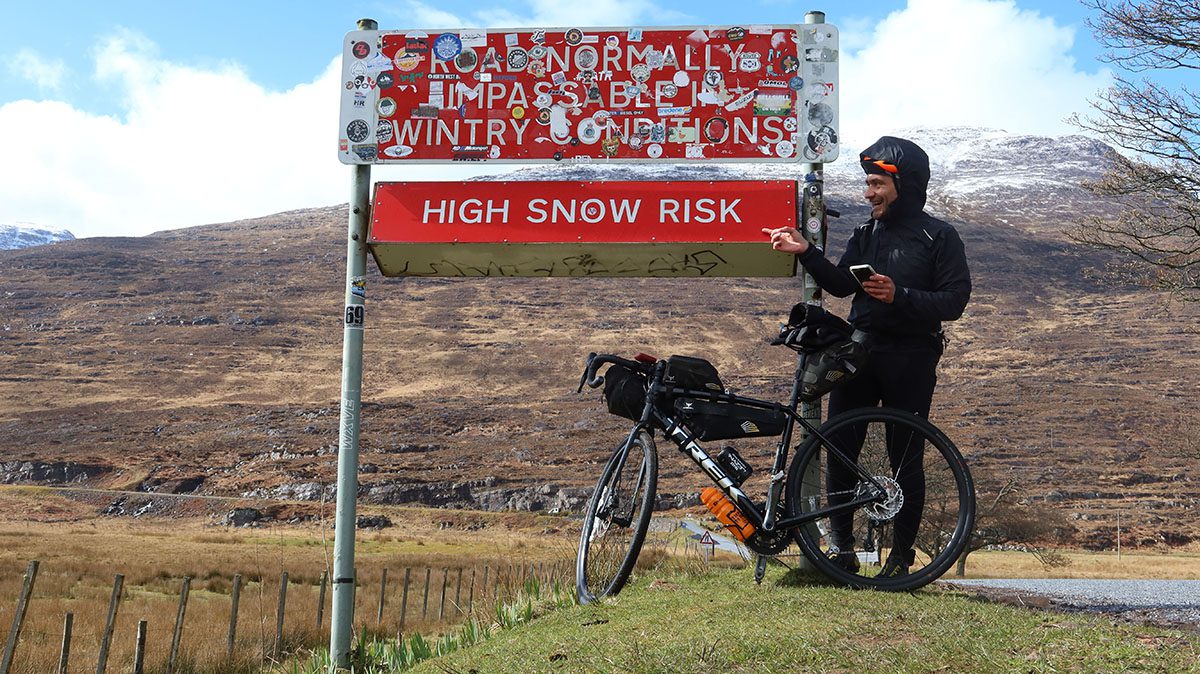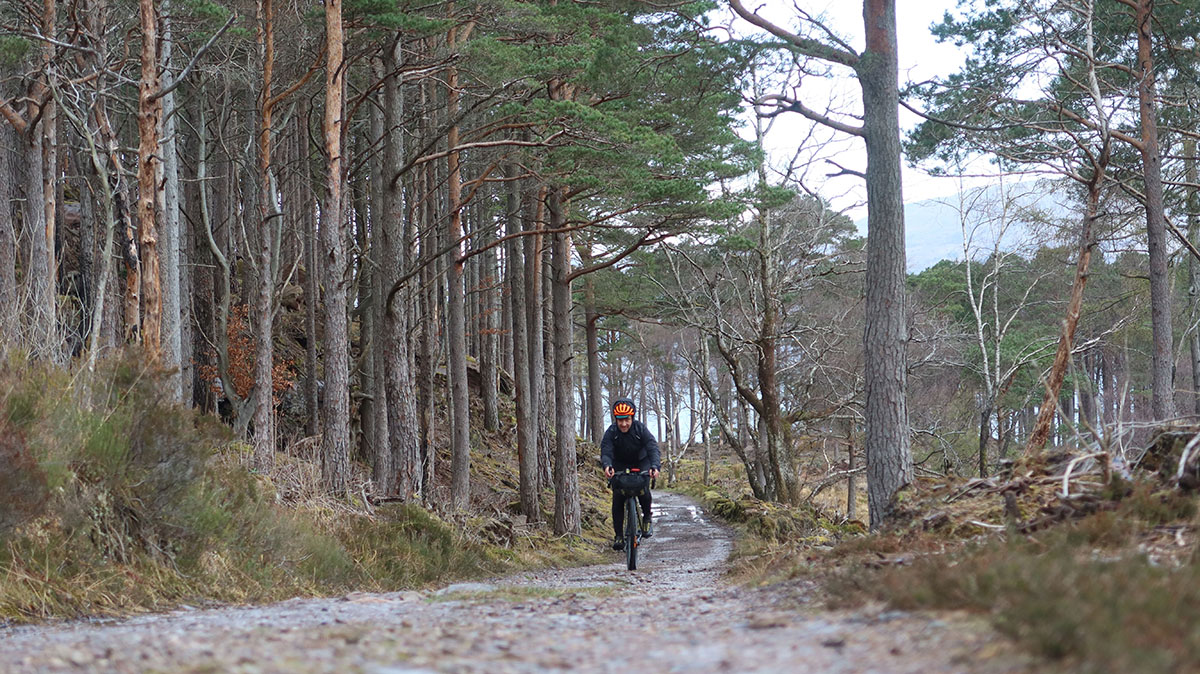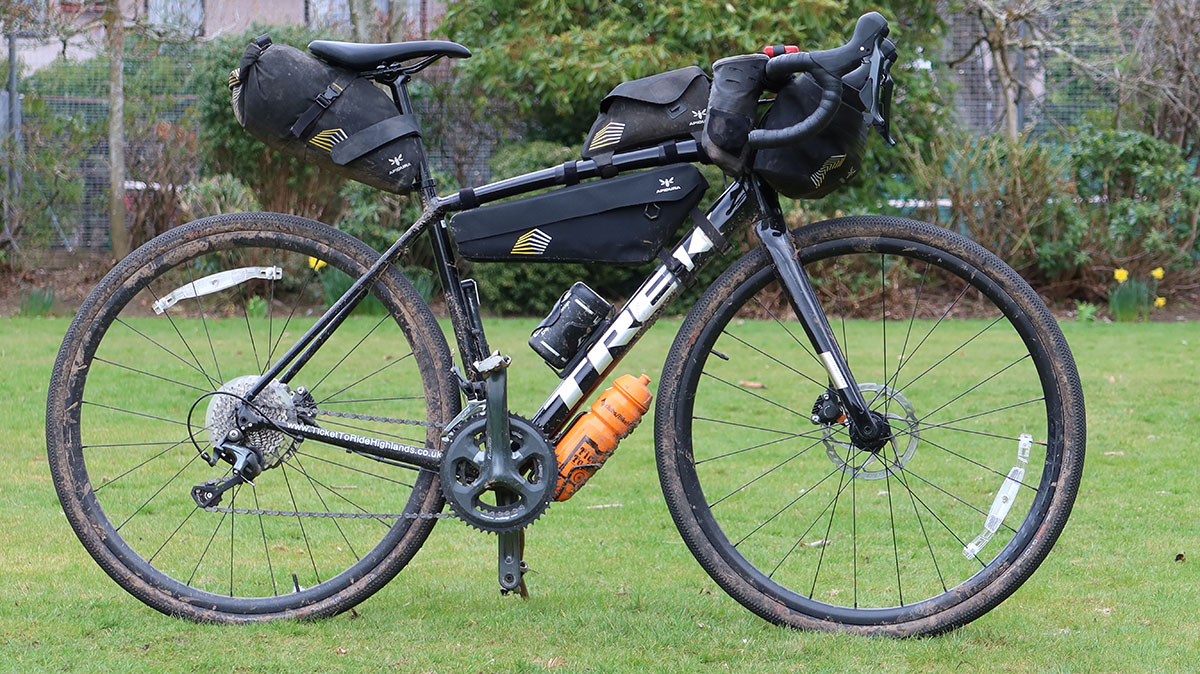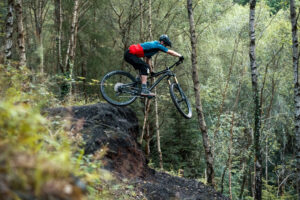An alternative North Coast 500 by bike

More than just a driving route – an alternative North Coast 500 by bike
When I visited towns and villages along the North Coast 500 route in Scotland last year, I spotted a lot of cyclists, more than I had anticipated. While I have not yet cycled the route as a whole, I have explored parts of it over more than a decade now. My first cycling trip in Scotland in 2006 took me and a friend from Edinburgh as far north as the Isle of Lewis, and back from Ullapool over Bonar Bridge to Inverness. I cycled the Applecross peninsula on a 42-17 singlespeed bike (not recommended), and remember cursing the many climbs on the coastal road to Lochinver with panniers. I’ve been to John o’Groats twice, most recently documenting Mark Beaumont’s GBDURO victory in Maiden Race. I remember the happy moment when I arrived there after cycling the length of Britain on a singlespeed in less than six days.
Driving routes are dividing opinion, and the North Coast 500 is no different in that aspect. More visitors mean more traffic and a bigger strain on facilities. But while bikes still have an impact, compared to any other form of transport that impact is tiny. I have followed various routes in different countries on my singlespeed trip around the world, including Route 66 in the US, the Great Ocean Road in Australia and New Zealand’s West Coast, and have always found that a bike is a much better way of transport to explore them.
But what makes me come to the conclusion that bikes are better to explore driving routes? When travelling by car the options to stop are much more limited. You can’t just suddenly stop on the road to admire a nice view. Different to Route 66 or the Great Ocean Road, roads in Scotland normally decrease in width the further north you travel, or disappear completely.
Travelling by bike is very different. Opportunities to stop are endless. You can spontaneously wheel your bike off the road, find a nice rock to sit on and take in the views. As long as you stick to the principles of the Scottish Outdoor Access Code, respect the interests of other people, care for the environment and take responsibility for your own actions, you can venture down the track on the side of the road and find out where it takes you. If you are camping, the best camp spot is the one where no one will notice you, or recognise that you have been there.
And it doesn’t need a mountain bike to discover those paths less travelled. When I planned my trip up north, I struggled to book my bike on a train from Edinburgh to Inverness. As much as the main route north is clogged up with traffic on the A9, the increase in the popularity of cycling means that bike spaces on trains are clogged up too. Taking a bike on the trains north of Edinburgh is not always possible (although Scotrail is increasing capacity on those trains shortly). I rented a bike at Ticket to Ride in Inverness instead, turning a road into a gravel bike with a simple tyre swap, and arrived more relaxed than normal.

While I have travelled loads of miles on my bike, it isn’t the sheer distance that attracts me any longer. These days less often means more – less miles and more opportunities to stop allow me to discover and understand a place, instead of just making another tick on the neverending bucket list. While I am very comfortable travelling on my own, it is often the conversations along the way I remember years after, or the moments shared with friends. I was accompanied by my friend Martin on my first trip to Scotland in 2006, and some of the route I cycled on my ‘alternative’ North Coast 500 was part of the very first experience with bikepacking, shared with a good friend. This time the river fords felt very easy to negotiate, but 16 years ago it was Martin’s company that helped me to keep smiling.
All the above thoughts influenced me when creating a 200-mile route, which gives you a great idea of Scotland’s beautiful north. For most, my itinerary can be ridden in a week or less, but there is also plenty of opportunity to spend much longer. I opted to stay in local accommodation, but mostly carried my own food on the bike, as services can be sparse.
I arrived in Inverness on a Thursday, and stayed at Black Isle Bar & Rooms for the first night. Their pizza and selection of craft beers is fabulous, with plenty of options for breakfast nearby too. A Coop just across the road is perfect for last minute shopping.
On day two I picked up my bike at Ticket to Ride, cycled along the River Ness to the station to take the train to Strathcarron, about two hours away (the train is very slow too, great for enjoying the Highland scenery). I then followed the NC500 route up and down the iconic Bealach na Bà, on the third-highest road in Scotland, and along an equally scenic road to the small village of Shieldaig. My room at Tigh an Eilean was superb, with ground instead of instant coffee in the room, and my bike rested safely in the local store adjacent to the hotel.
On the third day I set off from Shieldaig, admired the fishy mural on the public toilet, and combined the NC500 route with gravel tracks along Upper Loch Torridon, then continuing through the picturesque Glen Torridon. From Kinlochewe, where the Gorse Bush is perfect for lunch, I ventured off the NC500 route towards Achnasheen and on to Lochluichart. Achnasheen is on the railway line from Kyle of Lochalsh to Inverness, so if you don’t want to cycle on this busy road, take the train for two stops instead to Lochluichart. After a stiff gravel climb I was rewarded with fast gravel tracks and amazing views from Lochluichart Wind Farm, and met A835 at Loch Glascarnoch. This can be busy again, especially when the ferries arrive or leave Ullapool, but a stop at Loch Droma is great for letting the main traffic pass. I joined the North Coast 500 again at Corrieshalloch Gorge, continuing on the road and an alternative route on the opposite side of the River Broom to Ullapool, where the Harbour House B&B offered shortbread and sherry on my arrival.

From Ullapool I continued on day four on a well-known coast-to-coast route to Oykel Bridge, having already ridden this section during my inaugural bikepacking trip in 2006 and also during the Highland Trail 550. I chose the road option to Culrain, but you can also take the Highland Trail to Croik and continue from there to Ardgay. The newly-opened White Rose Tower B&B near Invergordon was my last overnight stop. From the outside it looks like a proper castle, from the inside it feels like a proper castle, but you’ll be surprised to find out that it was only built in 1990.
My last day was easier than the days before, and offered plenty of places for a stop, so you don’t necessarily have to carry food on the last day. The route was a great mixture of cycle paths, quiet roads and gravel sections, with curious places to stop like the Clootie Well near Munlochy, linked to ancient healing traditions. After handing in my bike I stopped for dinner at Blackfriars and took the train home to Edinburgh.
You can find out more about the route at www.bikepackingscotland.com/nc500.







